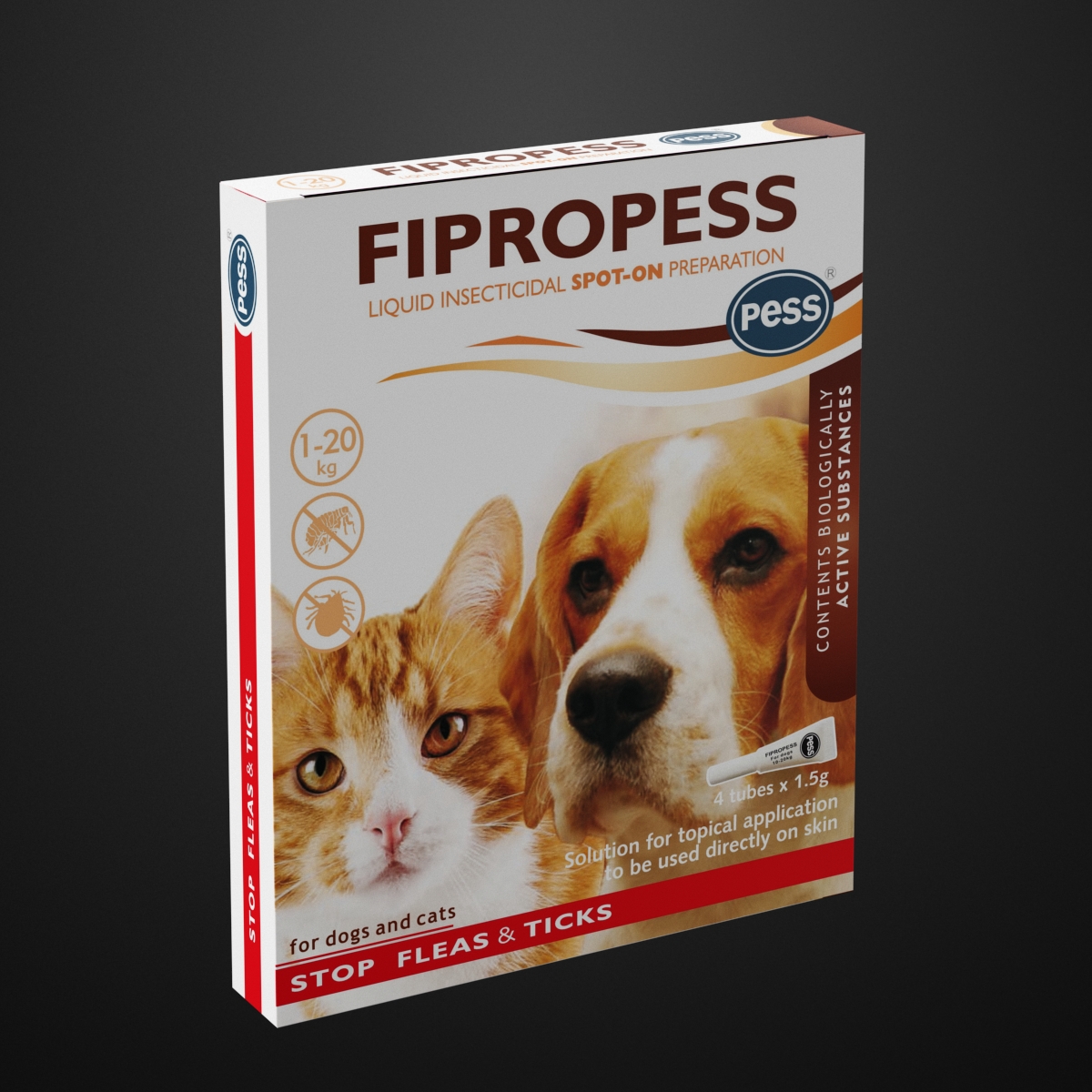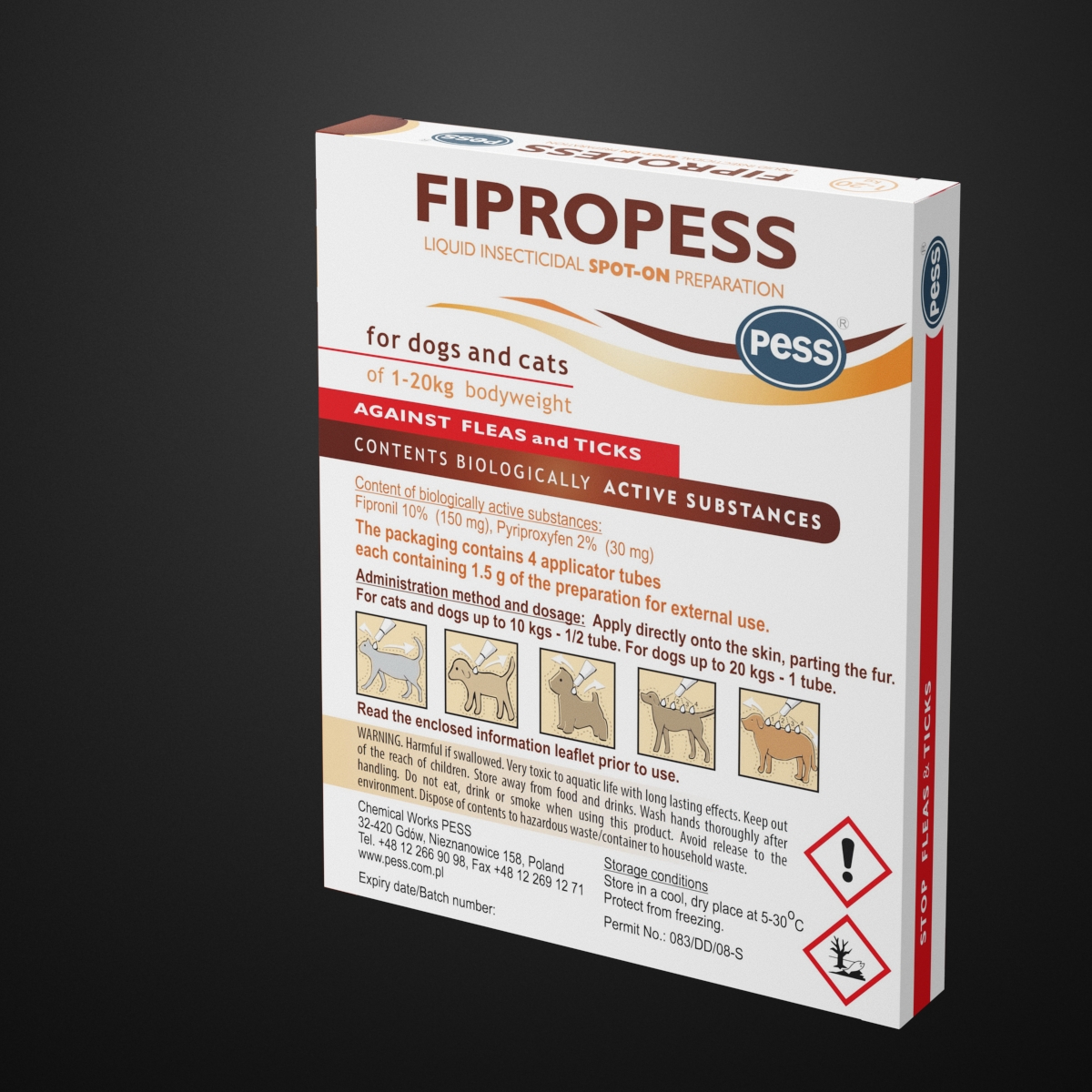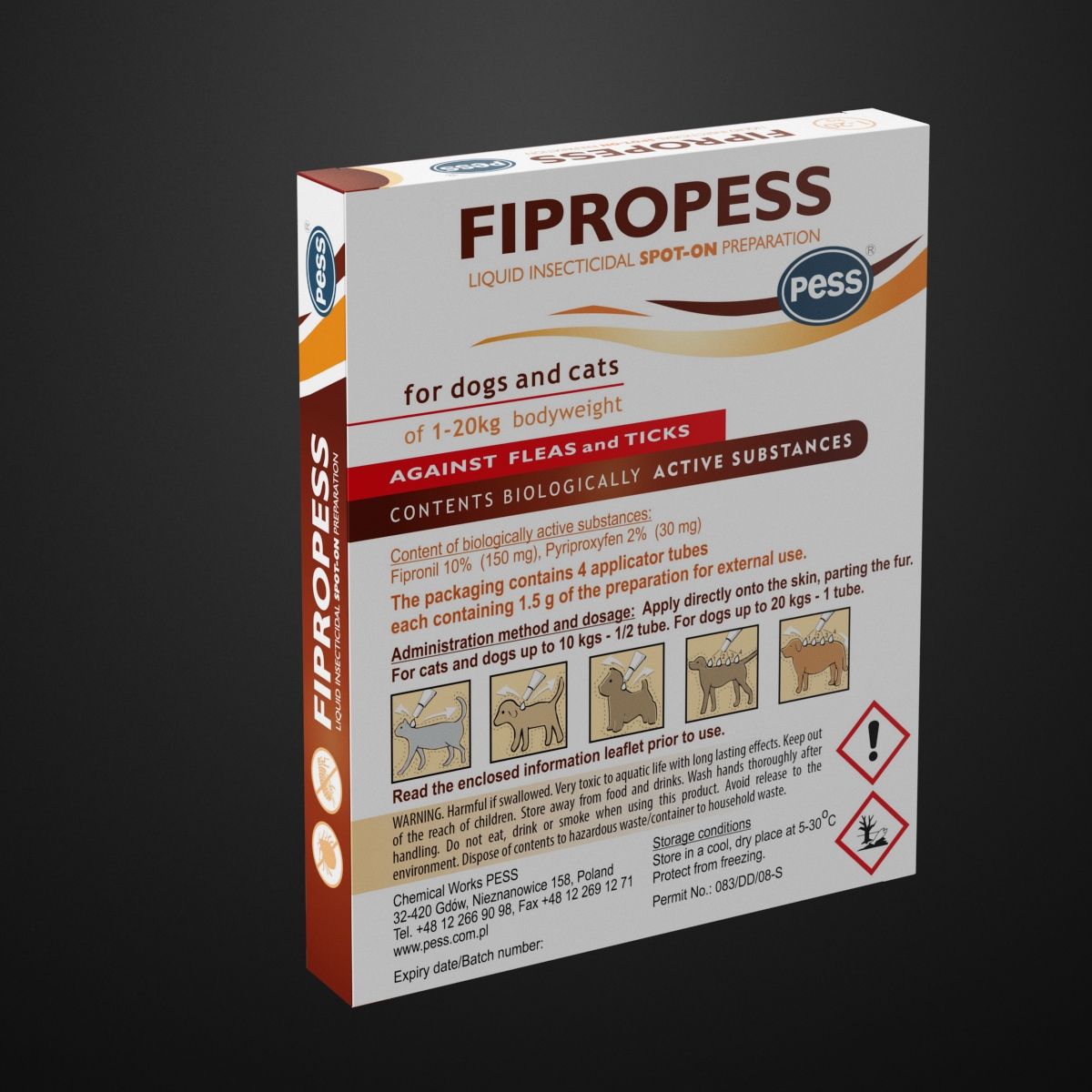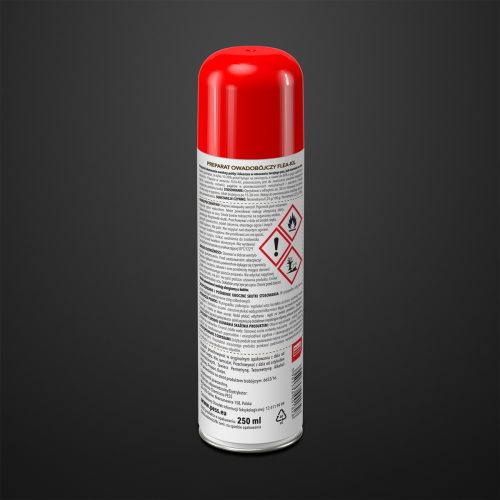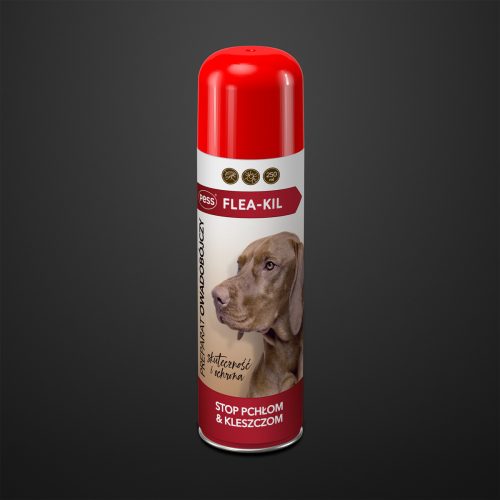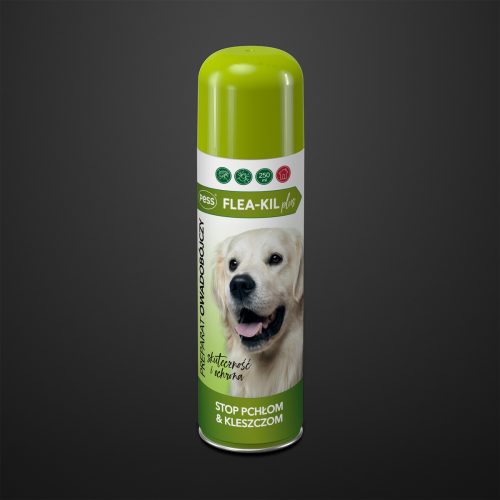EXPORT ONLY Against fleas and ticks on dogs and cats. Half of the tube for small dogs and cats (up to 10 kg); 1 tube for medium-sized dogs (10-20 kg)
FIPROPESS spot on
Description
Use
Against fleas and ticks on dogs and cats. A spot-on type of preparation, in a liquid form.
Not to be used in puppies less than 3 months of age. In the sick, or weakened dogs/cats to be applied after prior consultation with a veterinarian only. In animals sensitised to the effects of the preparation transient hypersensitivity of the skin may occur, i.e. itching, and redness at the application site.
Product characteristics
| Effectiveness | One application protects the animal from parasites for 4 weeks, during the intensive hatching of the insects, i.e. between April and September; this time may be reduced to 2 weeks, depending on the prevalent environmental conditions and the weather. | ||
| Shelf life | 2 years | ||
| Contains |
|
||
| Packaging | One packaging contains 4 disposable tubes of 1.5 g of the preparation each, for external use only. Half of the tube for small dogs and cats (up to 10 kg); 1 tube for the medium-sized dogs (10-20 kg), and so on. |
Application method
![]()
![]()
![]()
![]()
![]()
Holding the tube vertically, tip up, turn around to break the seal and remove the cap. In dogs the preparation is to be applied in four places along the animal’s back, against the hair, starting off at the neck and moving down toward the base of the tail (as per illustration). In cats around 1/2 of the tube is to be used, the preparation to be against the hair, in one spot between the shoulder blades. Full spreading of the preparation on the skin occurs within approx. 24 – 48 hrs.
Safety of application
Fipronil is a pyrazole insecticide of insecticidal and acaricidal properties. Phenolic pyrazoles are a class of insecticides with a unique mode of action. They are chlorine channel blockers regulated by GABA. Gamma-aminobutyric acid is one of major inhibitory neurotransmitters in the central nervous system. As a result of blocking the chlorine channel Fipronil stops the chloride ion influx into the neurons – regulated by GABA receptor. Blocking the inhibitory process results in uncontrolled excitation leading to death. In view of the higher affinity for the binding sites in the chlorine channel in the invertebrates compared to the same sites in vertebrates, Fipronil exhibits selectivity in acting against fleas or ticks. In practical terms, it is not absorbed from the surface of the skin, therefore exhibiting long-term activity. Thanks to its good solubility in fats, it spreads quite easily through the lipid coating on the surface of the skin. Moreover, it has proved quite effective in combating insects with known resistance to chlorinated hydrocarbons, organophosphates and pyrethroids.
Pyriproxyfen is a representative of a group of substances called insect growth regulators (IGR). It is a juvenile hormone analogue. Pyriproxyfen as a juvenile hormone analogue blocks the receptors for this hormone by preventing the proper course of transformation in the insect’s developmental stages. In the adult insects it disrupts the reproductive processes resulting in oviposition of the wrong composition, thereby effectively inhibiting their development.
Fipronil and pyriproxyfen complement each other’s action effectively destroying fleas and ticks. In order to extend their preventive action it is essential to destroy all the parasites identified in the animal’s immediate environment with the aid of suitable insecticides.



